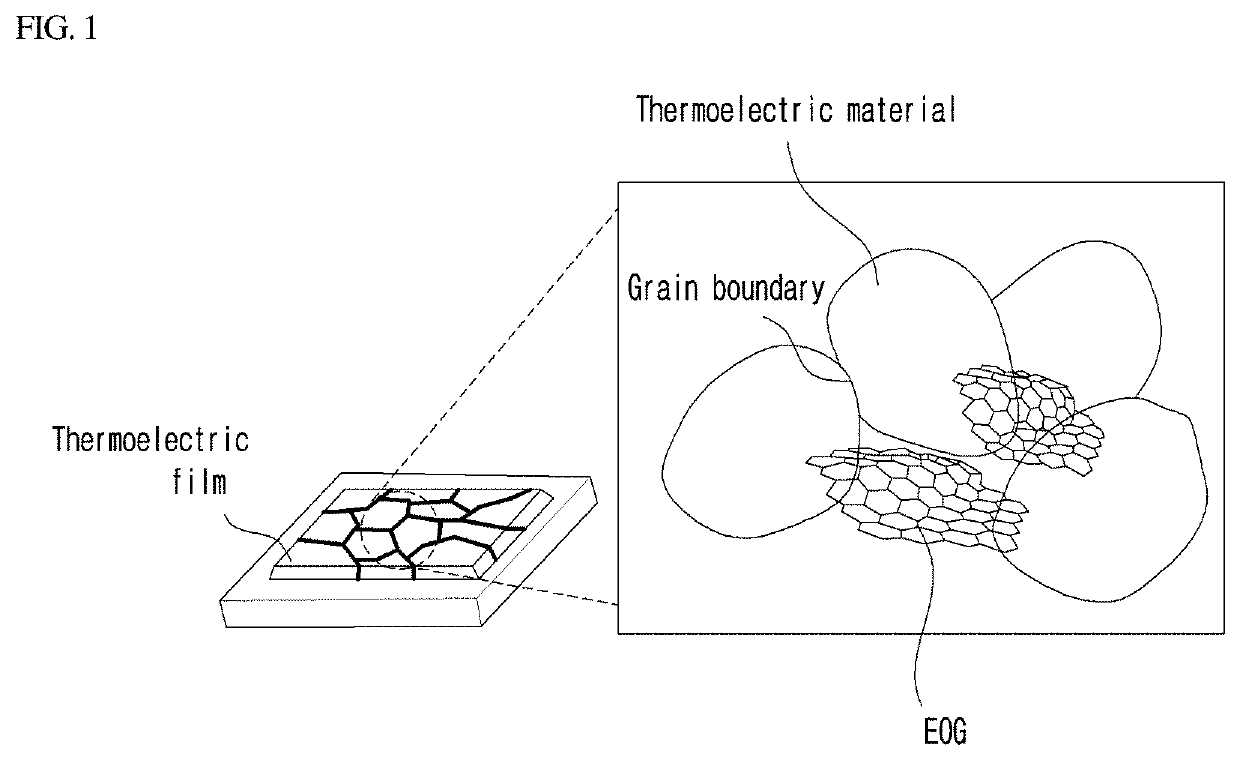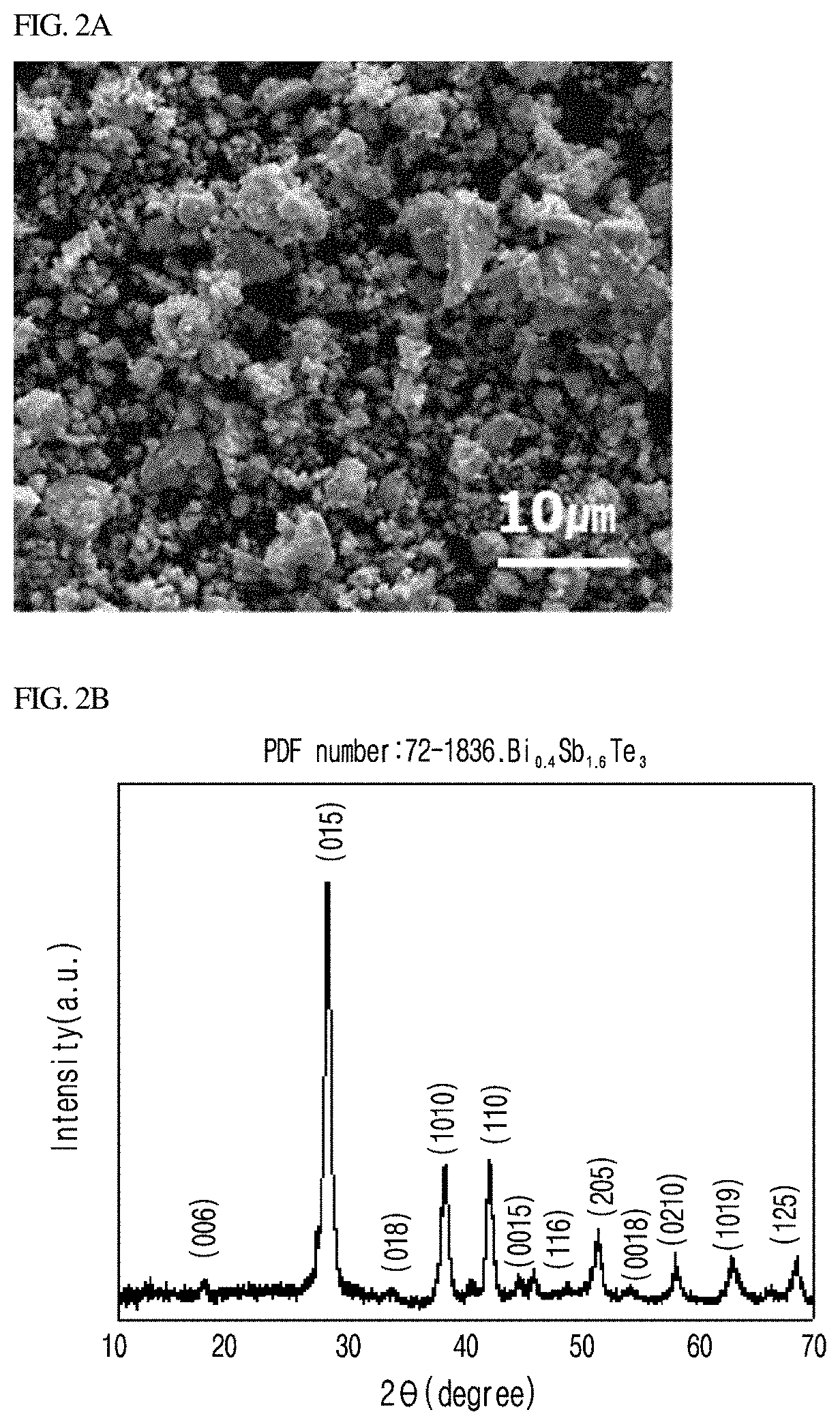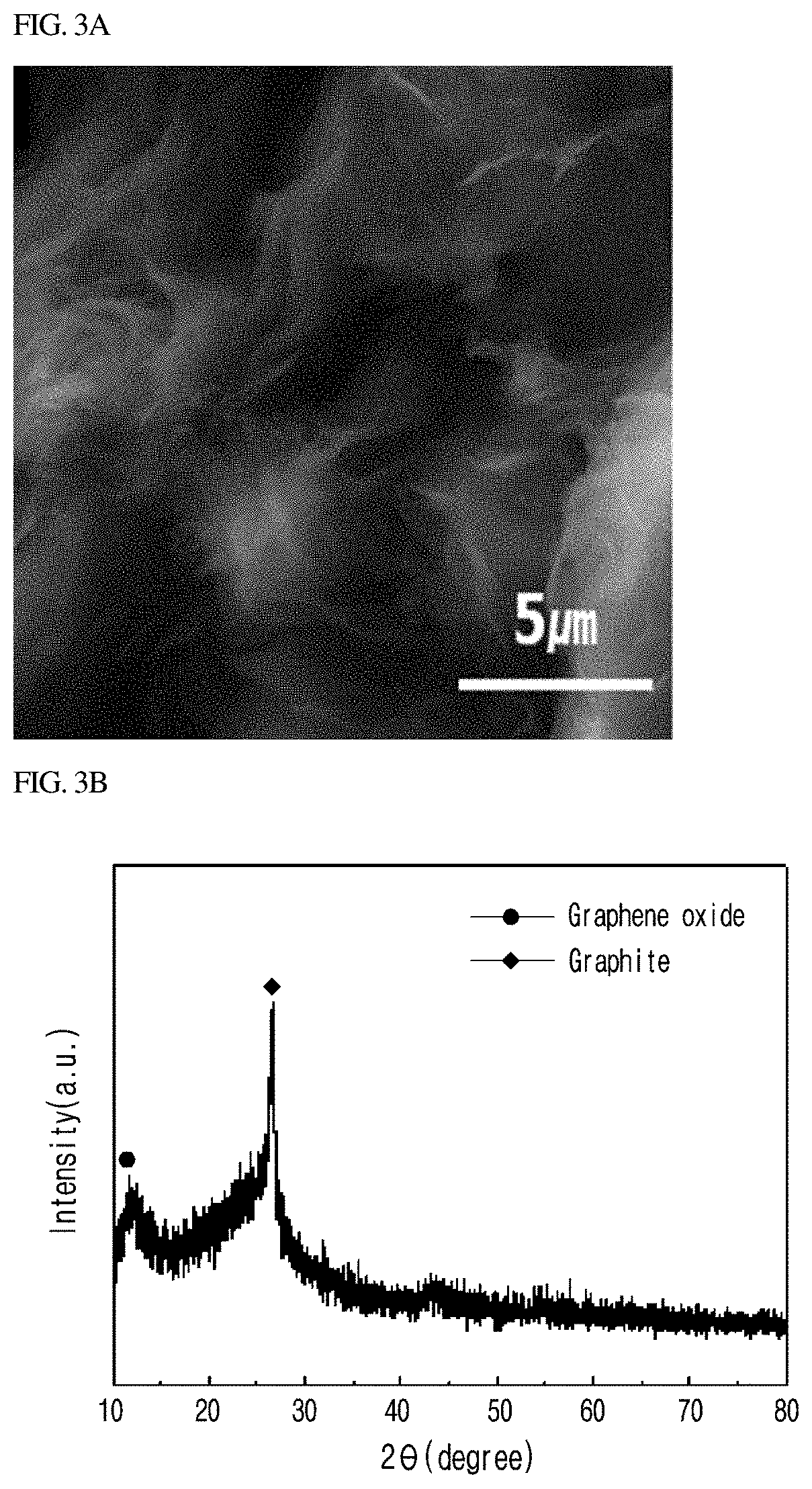Composition for forming a thermoelectric film and thermoelectric film containing the same
- Summary
- Abstract
- Description
- Claims
- Application Information
AI Technical Summary
Benefits of technology
Problems solved by technology
Method used
Image
Examples
Example
[0055]A thermoelectric film was manufactured by performing example 1 in the same manner except for using 0.6 wt % of EOG in step 1 of example 1 and using 79.2 wt % of the thermoelectric powder. When the graphene oxide used for manufacturing remains as it is, the EOG inside the thermoelectric film is approximately 0.8 wt %.
Thin Film Manufacturing-3
[0056]A thermoelectric film was manufactured by performing example 1 in the same manner except for using 0.9 wt % of EOG in step 1 of example 1 and using 78.8 wt % of the thermoelectric powder. When the graphene oxide used for manufacturing remains as it is, the EOG inside the thermoelectric film is approximately 1.2 wt %.
Thin Film Manufacturing-4
[0057]A thermoelectric film was manufactured by performing example 1 in the same manner except for using 1.3 wt % of EOG in step 1 of example 1 and using 78.4 wt % of the thermoelectric powder. When the graphene oxide used for manufacturing remains as it is, the EOG inside the thermoelectric film...
Example
Comparative Example 1
[0060]Step 1: A thermoelectric film forming paste was manufactured by mixing 20 wt % of an organic binder (1 wt % of ethyl cellulose and 99 wt % of a-terpineol) and 80 wt % of thermoelectric powder composed of Bi—Sb—Te.
[0061]Step 2: A thick film-shaped thermoelectric film was manufactured by manually printing the thermoelectric film forming paste manufactured in step 1 above by a thickness of 400 μm, removing the organic binder present inside through two-stage heat treatment (at a temperature of 60° C. for two hours and at a temperature of 400° C. for four hours), and performing sintering between thermoelectric powder particles.
Example
Comparative Example 2
[0062]Step 1: A thermoelectric film forming paste was manufactured by mixing: a paste in which 0.9 wt % of a graphene oxides and water were mixed; 20 wt % of an organic binder (1 wt % of ethyl cellulose and 99 wt % of a-terpineol); and 78.8 wt % of thermoelectric powder composed of Bi—Sb—Te.
[0063]Step 2: A thick film-shaped thermoelectric film was manufactured by manually printing the thermoelectric film forming paste manufactured in step 1 above by a thickness of 400 μm, removing the organic binder present inside through two-stage heat treatment (at a temperature of 60° C. for two hours and at a temperature of 400° C. for four hours), and performing sintering between thermoelectric powder particles. When the graphene oxides used for manufacturing remain as it is, the graphene oxide inside the thermoelectric film is approximately 1.2 wt %.
PUM
 Login to View More
Login to View More Abstract
Description
Claims
Application Information
 Login to View More
Login to View More - R&D
- Intellectual Property
- Life Sciences
- Materials
- Tech Scout
- Unparalleled Data Quality
- Higher Quality Content
- 60% Fewer Hallucinations
Browse by: Latest US Patents, China's latest patents, Technical Efficacy Thesaurus, Application Domain, Technology Topic, Popular Technical Reports.
© 2025 PatSnap. All rights reserved.Legal|Privacy policy|Modern Slavery Act Transparency Statement|Sitemap|About US| Contact US: help@patsnap.com



